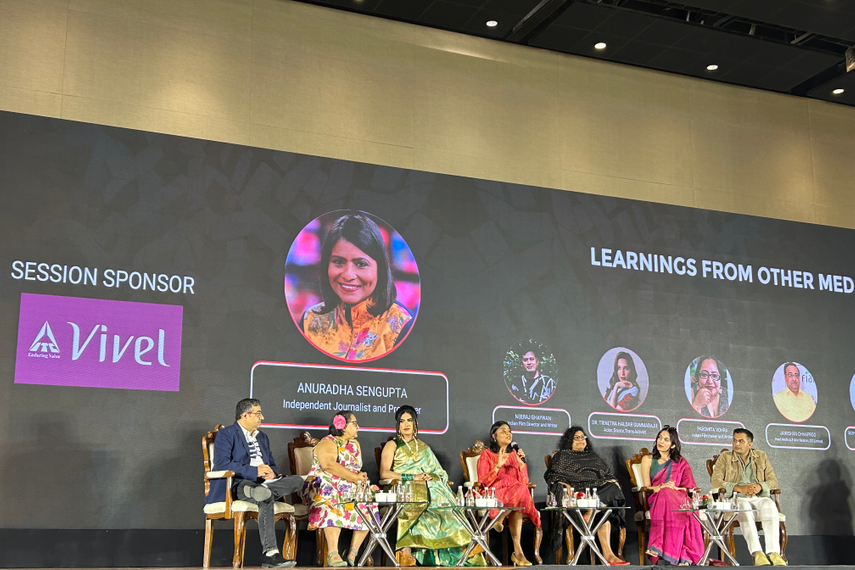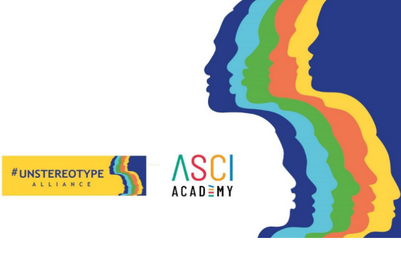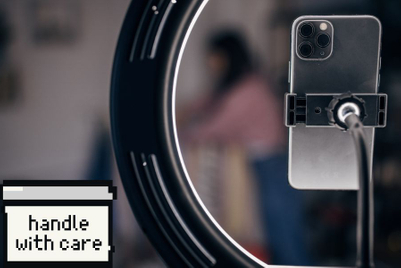
During ASCI's D&I Edge, held in Mumbai on 7 December, a panel featuring Neeraj Ghaywan, Indian film director and writer; Trinetra Haldar Gummaraju, actor, doctor, and trans activist; Paromita Vohra, Indian filmmaker and writer; Jaikishan Chhaproo, head media and public relations, ITC; Sushant Divgikar aka Rani-Ko-He-Nur, artist-singer, actor and equal rights champion; Mansha Tandon, head of marketing, YouTube India, underscored how media representation should venture beyond the safety net of sanitised advertising to authentically mirror the myriad diversities that define India.
It was moderated by Anuradha Sengupta, independent journalist and producer.
The discourse delved into the inherent risks, potential pitfalls of tokenism, and the challenge of moving beyond the politically correct, urging the audience to consider the nuanced, meaningful, and consistent pathways outlined by the panellists.
Weave diversity into the creative fabric
Ghaywan kicked off the session by underscoring that diversity extends beyond a mere checkbox; it's about more than just aspiring to be inclusive.
Delving into the tangible benefits of diversity and how it brings richness to creative inheritances, Ghaywan said, "We need to attract diverse artists for collaborative endeavours. At my company, we’ve advocated for a 50% representation of women. Drawing inspiration from Hollywood's inclusion rider, we’ve ingrained the importance of mandates in contracts to ensure diverse community representation.”
Motivated by a desire to disrupt the mainstream narratives dominated by a singular perspective, Ghaywan sees his advocacy as a means to disrupt the existing imbalance.
"Fostering diversity isn't a mere obligation but an essential component, a genuine commitment to growth and authenticity within workspaces. Representation must transcend rhetoric, or we risk falling short in creating truly inclusive environments," voiced Ghaywan.
Ghaywan challenged the prevailing narrative that often centres on a singular perspective, urging the acknowledgement of diverse viewpoints within feminism.
He highlighted, “There is value of perspectives from individuals in various roles, every voice contributes to the broader discourse on feminism. In doing so, we should advocate for a more inclusive and comprehensive understanding of feminism that transcends conventional boundaries.”
Gummaraju started his talk by quoting Marian Wright Edelman, who is a civil rights activist and founder of the Children's Defense Fund
"You can't be what you can't see," she said, before stating:
"Authentic representation in media for the queer community is crucial, as members intimately understand their struggles. The disparity in on-screen visibility is evident, with many experiencing distorted and caricatured portrayals that fail to capture the true essence of their identities.”
Gummaraju brought to attention the personal nature of this issue, stressing the importance of seeing oneself on screen in an aspirational light.
“The portrayal of the queer community should extend beyond a mere business metric. Creators should be committed to increasing the representation of queer and trans individuals in mainstream media, not just as a professional pursuit but to showcase a deeply ingrained aspect of their life. This visibility has the potential to be life-saving for individuals within the community," she expressed.
Integrate D&I at the product development stage
Tandon delved into the essence of diversity and inclusion, emphasising its pivotal role at the core of product development when catering to billions of YouTube users.
She articulated, “The reflection of lived experiences is imperative for user engagement. We at YouTube have substantially invested in training thousands of engineers, a quarter of whom have openly embraced their diverse identities."
In the past, YouTube's visibility of dislike counts contributed to an unsafe and non-inclusive environment for creators.
Addressing this roadblock to fostering a safer, more inclusive digital space, Tandon shared, “There was a necessity for a creative space that fosters safety and inclusivity. YouTube's leadership, in response to the prevalent harassment faced by marginalised communities, experimented by removing the public view of dislike counts. This controversial decision, though met with resistance, proved instrumental in curbing trolling and hate attacks, showcasing that prioritising inclusivity is not merely a mandate but a fundamental aspect of product development.”
Progress in diverse representation
Divgikar reflected on the transformative changes, noting a shift in executive and decision-making roles.
“The evolution is observed not only in local events and conferences but also internationally, where representation was lacking in discussions about South Asian and Brown communities in the West. The importance of tangible evidence of change has also led to the audiences' role in walking the talk,” they articulated.
Sharing personal experiences in the realm of performance art, particularly in the early days of YouTube, Divgikar acknowledged the platform's evolution and the challenges faced.
She shared, “Currently, the essence of inclusion — is seen not as a spectacle but as a normal individual contributing valuable talent. Due to this shift, amongst the LGBTQ+ community, there is a feeling of pride in their identity and the right to be acknowledged, as they were part of a community born from exclusion.”
Vohra underscored the importance of intent in the inclusion process, emphasising that it goes beyond a mere job requirement — it necessitates a genuine commitment to fostering a diverse and inclusive environment.
She shared, “The shift in media representation should stem from creating spaces for diversity to actively challenge and reshape the norms that define inclusion. When we featured an edgy story on Agents of Ishq centred around consent, there was meticulous editing undertaken to present stories as experiences rather than prescriptive directives. The goal is to foster honest narratives with kindness, compassion, and empathy, ensuring content is not violent, homophobic, or misogynistic.”
However, Vohra expressed that the platform faced unexpected trolling upon releasing the story, predominantly from liberal individuals rather than the anticipated right-wing backlash.
“The challenge of dealing with binary perspectives on consent, where some insist on rigid definitions, caused discomfort for those with more nuanced experiences. Despite the temptation to remove the content, the team opted to issue a statement, acknowledging the upset but emphasising the importance of holding space for stories that challenge and provoke thought,” she advised.
Is it risky for brands to address diversity in India?
Chhaproo delved into the intricacies of societal conditioning.
He said, “There is a challenge of understanding the receptivity of the masses, shaped by ingrained values and upbringing. We need to draw attention to examples like Titan's commercials on second marriages and same-sex unions, while we applaud their quality in tackling diversity there was a mixed reception due to societal norms.”
In recognising the delicate balance brands must strike to avoid alienating certain demographics, Chhaproo highlighted, “There is a contrast between linear television audiences, often adhering to conventional norms, and the more progressive content found on OTT platforms, which attracts audiences with broader sensibilities and acceptance of diverse relationships. The nuanced landscape of societal expectations and media consumption, emphasises the need for brands to navigate this complexity while maintaining inclusivity and sensitivity to diverse perspectives.”
Chhaproo stated there are impactful initiatives undertaken at both the corporate and brand levels. On the corporate front, he cited a notable instance where a factory employed a workforce of 1,500 women, constituting nearly 80% of the task force.
Talking about how ITC advocates for diversity, Chhaproo shared, “Our ITC Engage brand ‘One Soul’ is a gender-fluid fragrance, designed without specific gender targeting. Additionally, for products like Sovereign antiseptic liquid and Fiamma body washes, we have introduced braille labelling to enhance accessibility for those with visual impairments. It should be noted however that these progressive efforts should align with the brand's ethos.”
Wrapping it up, Ghaywan said, “Recognition is warranted for the transformation away from the conventional checkbox approach. Brands and agencies are now moving beyond mere representation, actively channelling investments into fostering progressive change at the grassroots level.”


.jpg&h=334&w=500&q=100&v=20250320&c=1)
.jpg&h=334&w=500&q=100&v=20250320&c=1)


.jpg&h=334&w=500&q=100&v=20250320&c=1)


.jpg&h=334&w=500&q=100&v=20250320&c=1)
.jpg&h=334&w=500&q=100&v=20250320&c=1)





.jpg&h=268&w=401&q=100&v=20250320&c=1)
.jpg&h=268&w=401&q=100&v=20250320&c=1)


